When Apple announced its iOS 14 changes back in April of 2021, America’s top cell phone brand was sending a message. Apple put MarTech, brands, and marketing agencies on notice that it was doubling down on user privacy and putting power back into its users’ hands. This sent the entire advertising industry into a tailspin as marketers scrambled to figure out how they should deal with the change.
When Apple first announced the privacy updates, Facebook was the most vocal opponent of the changes. While it was clear that the changes would affect the company, none of us could have speculated how impactful Apple’s privacy push would be.
Nearly two years have passed since Apple’s initial announcement. In that time, Facebook—now Meta Platforms, Inc.—has gone through some significant changes, new MarTech companies have emerged to help marketers compensate for Apple’s policy changes, and Apple has continued championing user privacy.
Let’s break down what these changes were and how they’ve impacted the industry as a whole.
What Were The iOS 14 Changes?
Apple has been no stranger to controversial updates. When Apple pushed iOS 7 back in 2013, the UI changes were met with both disdain and applause. More recently, Apple rolled back a significant change it made to mobile versions of Safari in iOS 15. Many such controversies have arisen due to UI overhauls, but objections to the iOS 14 changes came from within the tech industry—not from users.
The protests from big tech companies like Facebook came from the introduction of App Tracking Transparency (ATT). This feature made using Apple’s Identifier for Advertisers (IDFA) unreliable and forced Facebook ad changes that would later harm the company.
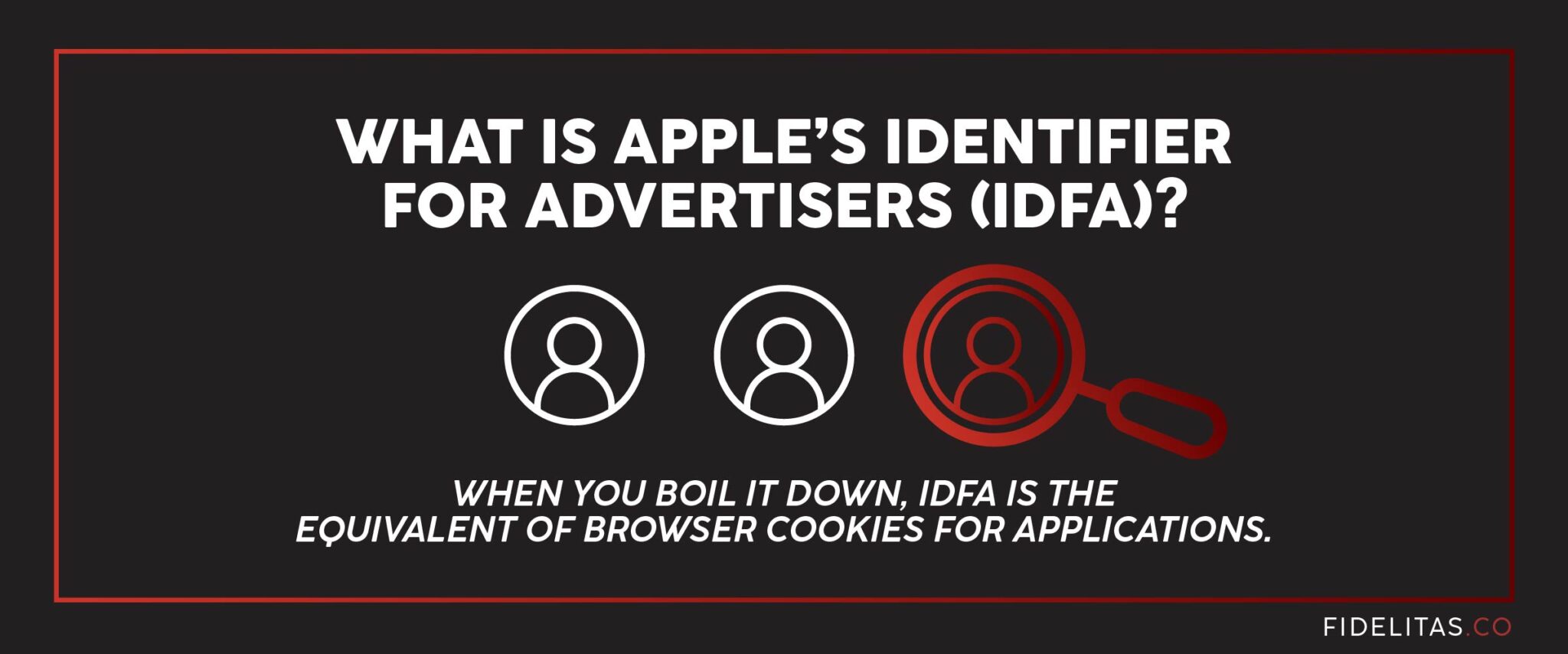
What Is Apple’s Identifier for Advertisers (IDFA)?
Apple’s IDFA was a unique, random number assigned to each Apple device. Marketers used these identifiers to track user interactions with the brand; according to Apple, IDFAs could be used for
frequency capping, attribution, conversion events, and more.
The data was helpful to marketers since it allowed them to optimize their ad campaigns and ensure they weren’t wasting ad spend by ensuring that they weren’t showing a single user the same ad too many times.
Google uses a similar system on the Android operating system.
When you boil it down, IDFA is the equivalent of browser cookies for applications.
Marketers used these unique identifiers to build consumer profiles. This became a concern when Apple decided to take its privacy-first approach because users had no control over whether or not their data was being collected.
Enter Apple’s App Tracking Transparency update.
What Is Apple App Tracking Transparency?
Apple’s App Tracking Transparency framework actively gives users control over who their data is shared with. The
ATT framework requires apps to gain permission from users to track their activity if they share that data with 3rd parties.
So before a company like Facebook can share user data with an advertiser, the user has to consent to have their data tracked and shared. If they consent, the app can operate as usual, and advertisers can get their data. If they don’t, that can create a major problem for advertisers.
Why?
Essential advertising functions like targeting and measurement become more difficult to implement effectively. And attribution becomes very murky, making it more difficult for marketing teams to meet their KPIs. This forces Facebook ad changes since the platform can no longer track users outside of the app.
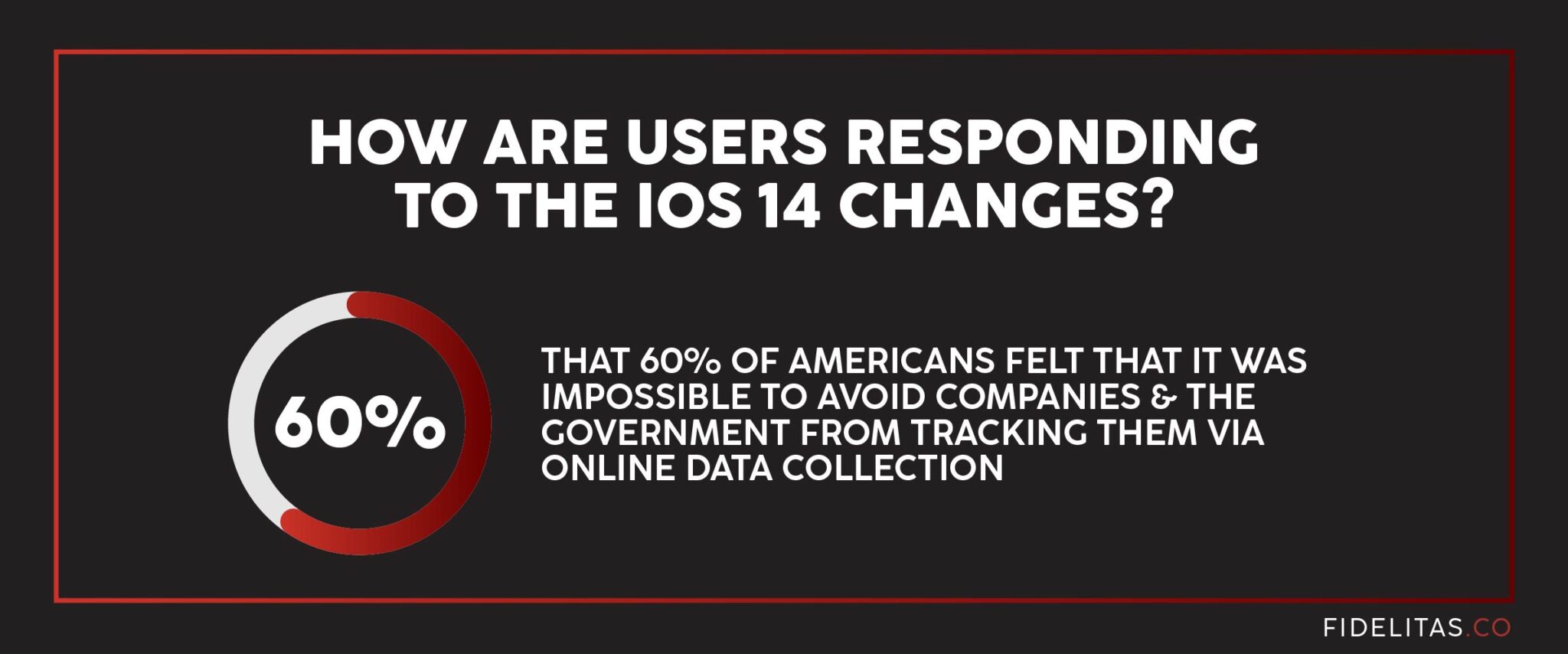
How Are Users Responding to the iOS 14 Changes?
American sentiment regarding online privacy has evolved drastically over time. When smartphones and social media companies first started emerging, users really didn’t understand the implications of agreeing to various terms of service (TOS). Until recently, most consumers probably didn’t even know that IDFAs existed or that their out-of-app actions were being monitored. Once online privacy advocates started sounding the alarm, people began to realize that their data was an extremely valuable commodity.
Back in 2019, Pew Research found that
60% of Americans felt that it was impossible to avoid companies and the government from tracking them via online data collection, and 80% felt they had no control in the matter.
Given the increased anxiety revolving around data tracking and the helplessness felt by the majority of Americans, it should have come as no surprise that the user opt-in rates for application tracking were abysmally low when Apple’s ATT feature first rolled out.
A year into the framework’s release and things seem to have stabilized. Marketing analytics platform
AppsFlyer released a study involving 550 different apps and saw an opt-in rate of 39%—which the report speculated would become the average minimum opt-in rate over time. So while most iOS users are choosing privacy over in-app experiences right now, that may not be the case indefinitely.
How Have The iOS 14 Changes Impacted The Marketing Industry?
Apple’s commitment to user privacy has undoubtedly had a major impact on the marketing industry as a whole. The change forced marketers to take an entirely different approach to digital marketing. New marketing technology companies have arisen to help brands fill in the gaps in the attribution data they lost. Yet arguably, the biggest change of all has been to Meta, which is still reeling from the Facebook ad changes.
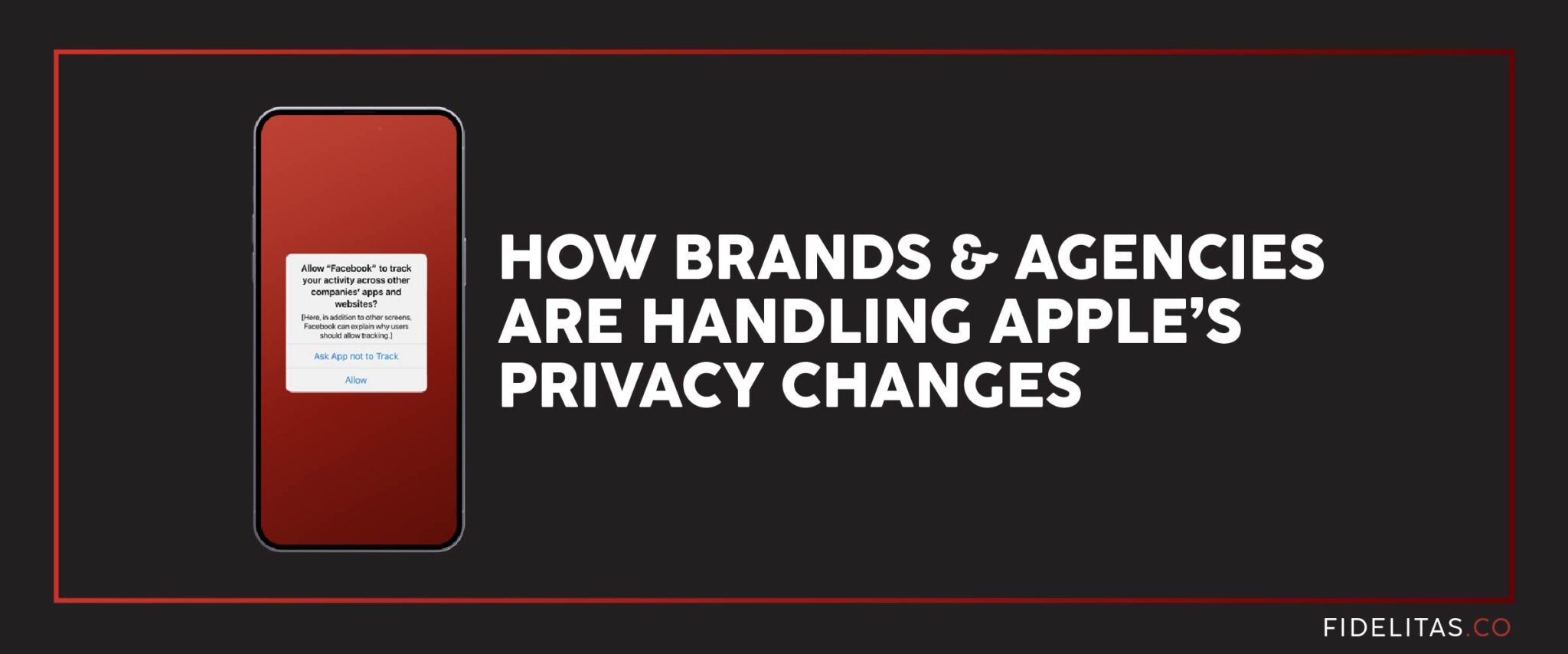
How Brands And Agencies Are Handling Apple’s Privacy Changes
The launch of Apple’s iOS 14 privacy updates presented a big problem for advertisers. As Apple stripped marketers of the ability to use the tools and KPIs they had grown accustomed to, many reacted by pulling back on their iOS ad spend. By the second week of June 2021,
Apple’s share of mobile ad spend dropped 14% from where it was at its peak in February.
Pulling back on iOS ad spend wasn’t the only response from marketers. Many began to look at their marketing efforts more holistically by expanding their KPIs and tracking gains in impressions and overall brand awareness. Some marketers renewed their investment in owned marketing channels such as email lists. And the massive shifts in the marketing landscape gave room for blooming channels like SMS to gain their footing.
While brands and agencies were surely shaken up by the initial launch of iOS 14.5, help was on the way from the MarTech industry.
Marketing Tech Companies Seek To Fill The Gap
After iOS 14 crashed into the marketing ecosystem, innovators rushed to provide creative solutions to help recapture attribution. Companies like Triple Whale, Wicked Reports, and Northbeam have been stepping up to help marketers fill in the gaps in their marketing attribution.
Triple Whale is one of the newest players in the MarTech area. It was founded in 2021 and has since become one of the most prominent emerging marketing tech companies. Triple Whale claims that brands can get attribution numbers they haven’t seen since iOS 14 was released. Using first-party data, Triple Whale allows marketers to see what route people take to reach their Shopify storefronts.
Another huge benefit of companies like Triple Whale is that they enable brands to use their own data instead of relying on attribution data provided by platforms like Facebook.
Many of such companies are still in their infancy, but they’ve been on the ball and continue to provide brands the tools they need in the privacy-centric future we’re living in.
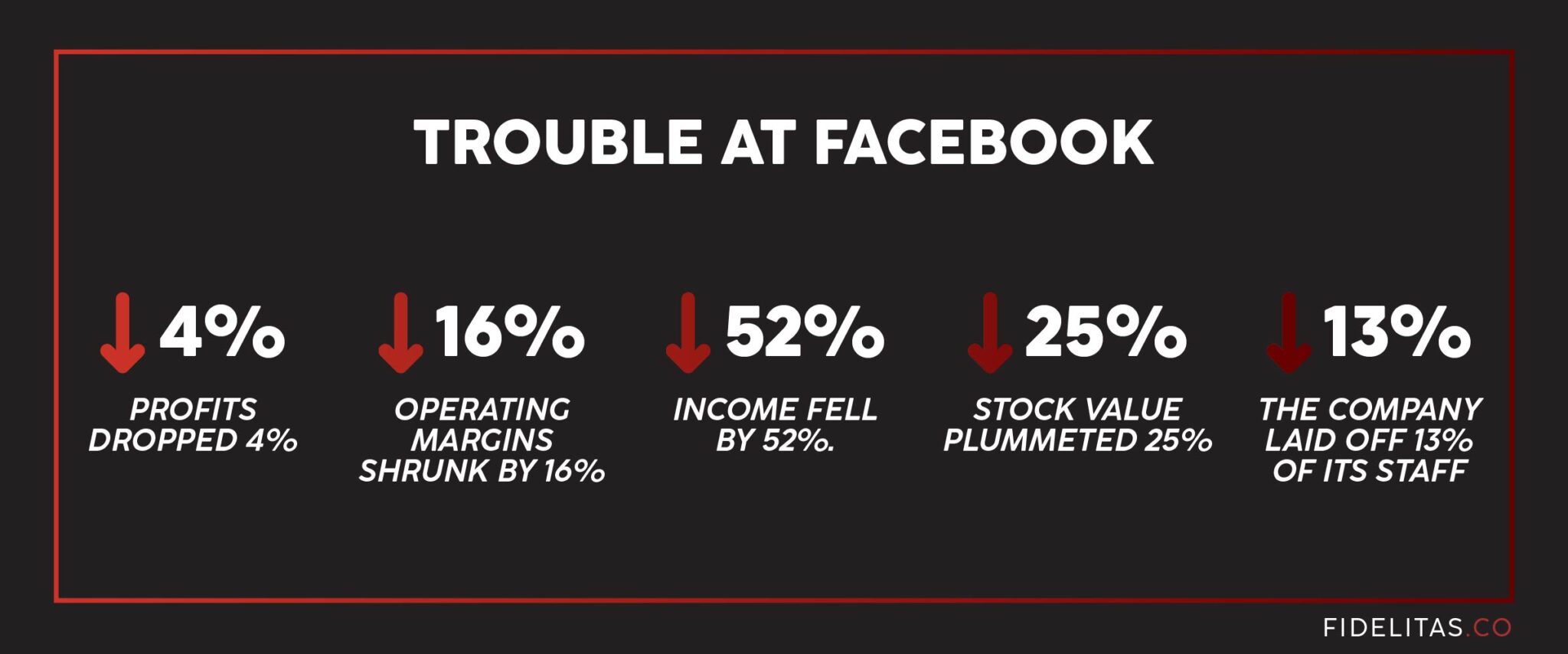
Trouble At Facebook
Facebook has gone through some significant changes over the past two years—the most obvious being that the company rebranded to Meta Platforms Inc. at the tail end of 2021. Leading up to that change, Facebook faced significant pressure from all sides. TikTok continued to take the world by storm while capturing an increasingly large portion of ad spend. The company was riddled with controversy and internal struggles. And the economy was forcing brands to tighten their pocketbooks.
We can only speculate as to the actual motivations behind the PR stunt. Regardless, the rebrand successfully distracted from all of the company’s bad press and moved the conversation toward its development of virtual reality technology.
But that success would be short-lived.
At the beginning of 2022, Facebook CFO
Dave Wehner speculated that the company would lose $10 billion in revenue during 2022 due to Facebook ad changes caused by Apple’s Privacy Update. While it doesn’t seem like the losses were as bad as Wehner expected, the company has lost several billion dollars in revenue so far; and it’s fair to assume that Apple’s privacy changes have contributed to that decrease.
During their Q2 earnings call on July 27, 2022,
Meta announced the first revenue drop in the company’s history. The Q3 report painted an even bleaker picture as Meta’s year-over-year
profits dropped 4%, operating margins shrunk by 16%, and income fell by 52%. Meta’s stock value plummeted 25% shortly after. Less than a month later, the company laid off 13% of its staff.
How Will Future iOS Updates Impact Marketers?
The focus on user privacy is here to stay, and Apple is continuing to double down. Every major iOS update released since the initial iOS 14 privacy changes has introduced new obstacles for marketers to overcome. It doesn’t look like that will be changing any time soon.
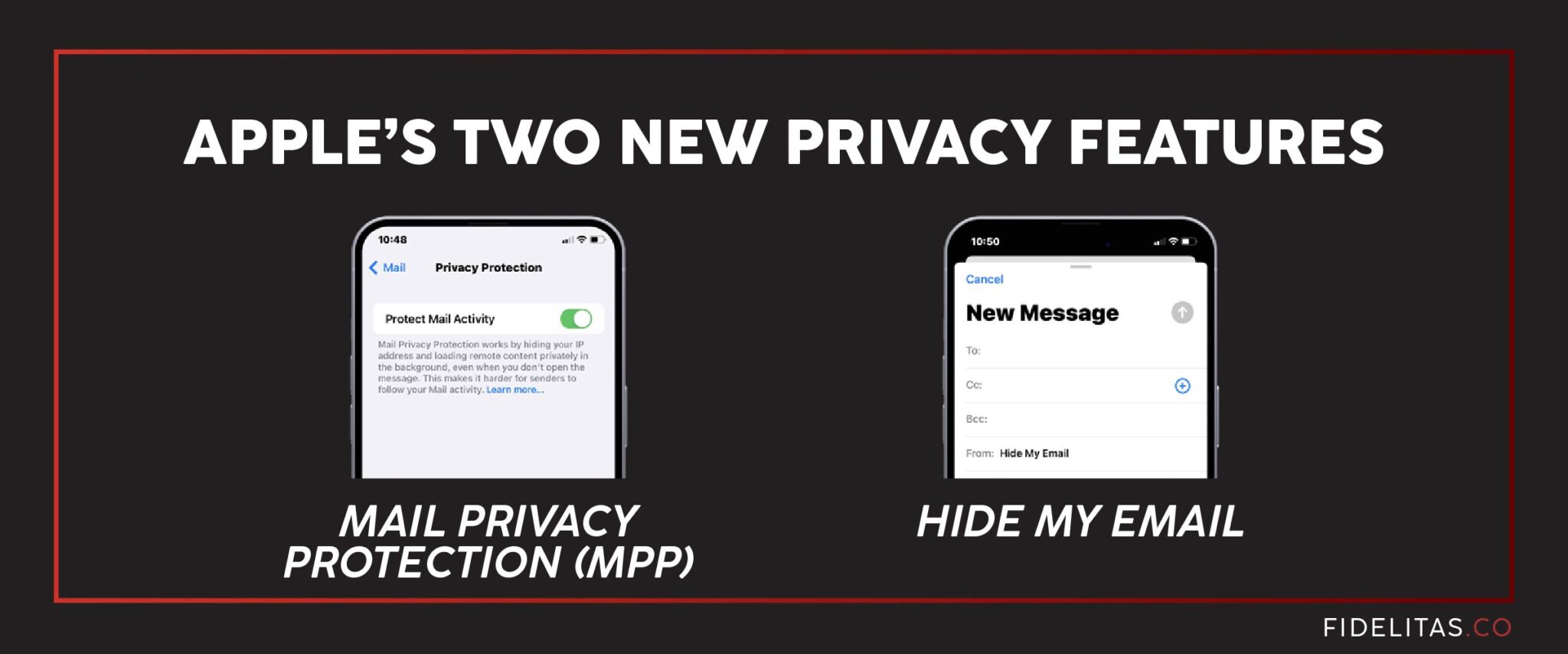
iOS 15 Sparks Panic Among Email Marketers
When Apple announced the changes it planned to make with iOS 15, email marketers were hysterical. Apple’s two new privacy features—Mail Privacy Protection(MPP) and Hide My Email—would make tracking KPIs and gathering emails more difficult.
Mail Privacy Protection
Mail Privacy Protection changed the way marketers interacted with iOS15 users in two unique ways. The first is by protecting users’ locations via IP masking. This keeps marketers from being able to see the IP addresses or geographic locations of the people who open their emails.
The new feature also automatically opens any images in an email, so the 1×1 tracking pixel that marketers include in their emails gets opened by default, even if the user never actually looked at an email. This made getting an accurate open rate virtually impossible when MPP was turned on.
This forced marketers to focus on stronger KPIs like click-through rates (CTR) which are actually better indicators of user intent.
Hide My Email
The Hide My Email feature is pretty self-explanatory. When users enable the feature, it offers to generate and share a proxy email address with brands and apps on the user’s behalf. These proxy email addresses reroute emails to a user’s inbox without revealing their personal email information to marketers. However, Hide My Email is not a free feature, unlike Mail Privacy Protection. Users must have an active iCloud+ account to activate the feature.
Marketers feared that the feature would increase their hard bounce rates since users could remove themselves from a mailing list by deleting the fake email address instead of hitting unsubscribe. This could also make it risky for brands to buy email lists since they could unknowingly be receiving a bunch of deactivated email addresses. But as a best practice, we’d recommend shying away from paying for emails to begin with.
What To Expect With iOS 16
There are a couple of iOS 16 privacy updates that are important to note. Back in 2020, iOS 14 revealed that popular apps like TikTok were capturing users’ clipboard data. This even allowed them to steal users’ GPS locations by extracting the data from images that were copied to the clipboard…
With iOS 16, Apple implemented a fix for this security issue that allows users to block apps from stealing data. Unless your brand was running one of those malicious apps, there isn’t any clear impact on marketers right away. Such fixes make it clear that Apple isn’t going out of its way to hurt marketers.
Will iOS 16 Cripple SMS Marketing Efforts?
IOS 16 allows users to filter messages sent from numbers that aren’t in their contacts. The feature is unrefined and only has a couple of categories that users can filter messages into. But if updates in Brazil and India are anything to go by, SMS marketing could be in for a world of hurt.
Apple customers in said countries have received a filtering upgrade in their latest iOS 16 patches that allow them to filter marketing texts out of their main messages list and into a promotions folder. Think Gmail.
If this update makes its way to the U.S., then marketers will have to grapple with the fact that their SMS open rates could plummet. Some even predict that open rates could drop 40% and spam reports will increase.

The Best Way To Deal With iOS Changes
Apple will continue its crusade for user privacy, and there is nothing we can do about it. Instead of focusing on privacy updates and Facebook ad changes that you can’t stop, your time will be better spent proactively working to mitigate the impacts of future changes.
How?
Build stronger relationships with your customers.
Developing strong relationships with your customers fosters trust. And if customers trust you, then you won’t have to worry about the impact of privacy changes. You can build that trust by adding value to their lives and not spamming them with promotional messages (among other methods).
Regardless of whether your company is focusing its efforts on paid ads, retention, SEO, or content marketing, having knowledgeable marketers who know how to adapt is key to your success.
If you’re ready to scale your business’s marketing and work with a team that understands how to add value to your customers, schedule a meeting with Fidelitas today. We’ll help you find the best path forward for your marketing efforts.






